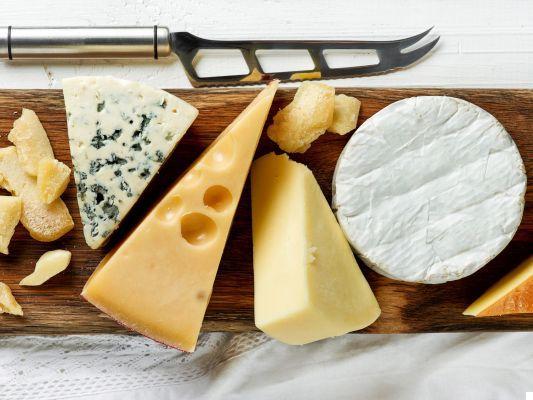
Some cheese are naturally lactose-free and you can therefore consume them with confidence even if you are intolerant to milk sugar. We are talking about Parmigiano Reggiano, Grana Padano and Gorgonzola.
«Fermentation takes place in the first phase of their production process: lactose is consumed by bacteria (which are added to the milk) and transformed into lactic acid. The process then continues with the maturation, commonly called seasoning, during which the "destruction" of lactose is perfected. It is clear that, the longer and more accurate this phase is, the more the residue of indigestible sugar approaches zero ", explains Maria Sole Facioni, molecular biologist, president of Aili Onlus (Association of the lacto-intolerant country, ) .
To be enjoyed without fear
"In the case of the gorgonzola dop, for example, the triple fermentation guarantees a quantity of lactose, in the finished product, of less than 0,01%. For the Grana Padano PDO and Parmigiano Reggiano PDOon the other hand, it is the long maturation (continued for 24-36 months, well beyond the limit for their sale which is respectively 9 and 12 months) that makes the milk sugar almost completely disappear: in fact, less than 0,01 remains. , XNUMX% », explains our expert.
To eat without exaggerating
After gorgonzola, parmesan and parmesan, the safest cheeses are those that undergo pressing: during preparation they are "crushed" to facilitate the release of the whey (and the sugar contained in it) and make them hard.
The pressing is followed by aging, which completes the elimination of lactose. Among the products belonging to this category are the very seasoned pecorino (minimum 4 months), asiago dop, smoked and sweet provolone (the amount of sugar present is often close to 0,1%), and then the swiss sbrinz dop (to extra-hard pasta), Emmentaler dop and Gruyère dop (both hard dough) with less than 0,01% per 100 g.
"The tolerated quantity of these cheeses varies from person to person", comments Dr. Facioni, so the advice of our association is to try small portions in order to evaluate your reactions ".
To be brought to the table with caution
Then they exist cheeses, not mature, which in any case have a reduced lactose content because they are particularly rich in lactic bacteria (which have the ability to break down sugar) of milk.
They are part of this group brie, caciocavallo, goat cheese, caciotta, camembert, quark, taleggio, toma. "They can be tolerated in moderate quantities, based on the amount of" lactase "enzyme that remains active in each of us," warns the president of Aili.
How to recognize products ok
«According to a circular from the Ministry of Health, the wording "Naturally lactose free" it can be shown on the label if the cheese has a lactose residue of less than 0,1 g per 100 g », explains the biologist.
"It is the producer who must check the content of this sugar with specific and specific chemical analyzes and then report it on the package".
Look for the blue sticker
As we have said, however, there are also cheeses with a lower residual lactose content, less than 0.01%, definitely more suitable and safe for intolerant people.
«Our association believes that only for these products can we really speak of“ lactose free ”», Facioni affirms.
"To make them immediately recognizable, we created the Lfree certification mark, registered in the country, in Europe and internationally: a blue sticker with the inscription Lactose free <0,01%, useful for all people (50% of the population of the country according to EFSA) who suffer from this intolerance ".
The fresh ones? Only delactosed
I soft fresh cheeses are prohibited for those suffering from lactose intolerance. Mozzarella, Certosa, cottage cheese, spreadable cheeses, ricotta they are obtained by acid coagulation and have high percentages of milk sugar.
For those who really do not want to give up these specialties, the market offers delactosed versions: through a controlled temperature and time process, the lactase enzyme is added to the product, which splits lactose into glucose and galactose.
The result is a well tolerated product, sometimes characterized by a slightly sweeter taste than that of "normal" cheese. "But it is always better to check the residual lactose content declared on the label, which can be less than 0,1% or 0,01%," says Facioni.


























